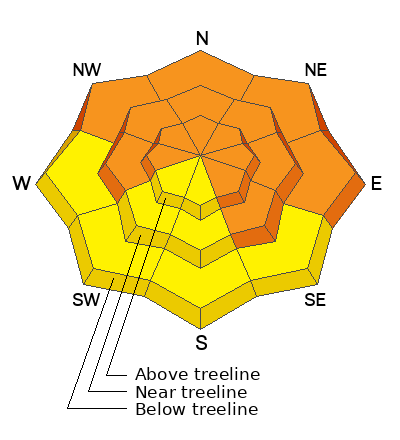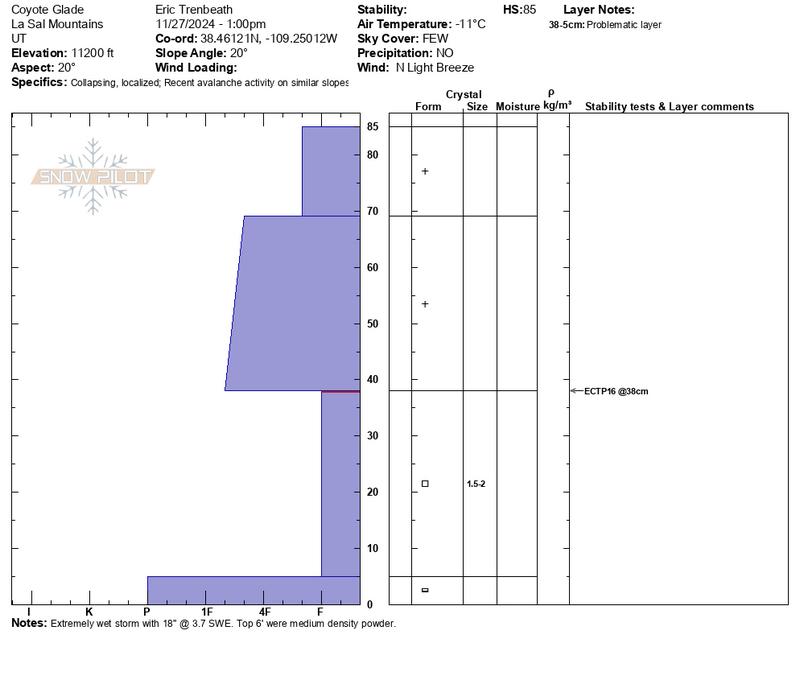Forecast for the Moab Area Mountains

Issued by Eric Trenbeath on
Thursday morning, November 28, 2024
Thursday morning, November 28, 2024
The avalanche danger is CONSIDERABLE on steep slopes facing W-N-SE. In these areas, a dense slab of recent storm snow is sitting on top of a pre-existing, faceted weak layer, and human triggered avalanches are likely.
A MODERATE danger exists on S-SW facing slopes, especially where you can detect stiff slabs of wind drifted snow. The danger decreases as you lose elevation.
Conditions remain thin and rocks, stumps, and dead fall still pose a significant hazard.

Low
Moderate
Considerable
High
Extreme
Learn how to read the forecast here










